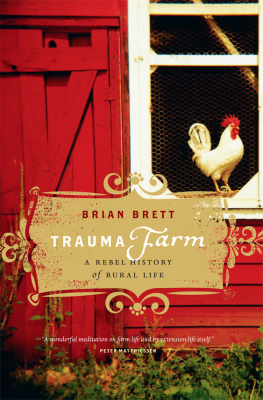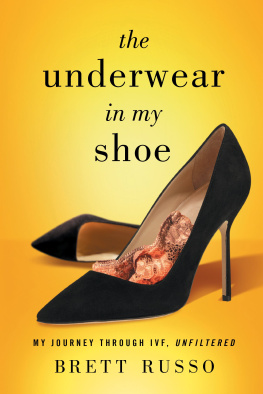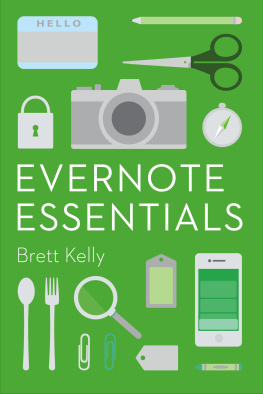BIBLIOGRAPHY
ALTHOUGH MANY YEARS of reading and experience went into Tuco , the books listed below were specifically chosen for research. A number proved irrelevant. Some I disagreed with wildly. King Solomons Ring long ago inspired much of my initial thinking about relationships with animals. The reputation of its author, Konrad Lorenz, the man who once was a Nobel Prizewinning god of ethology, unfortunately, has slid since it was discovered he was a little more involved with the Nazis than he previously admitted. Marc Hausers Wild Minds gave me numerous ideas, even though since writing it hes been involved in a controversy over the verification of a few of the many hundreds of studies in his labs. This is the nature of the world and, in many ways, the subject of this memoir. Its full of scattershot surprises, as both Kapuscinski and Kundera discovered in their lives. Other books, such as Parrot Culture , have been extremely useful. Despite being a dry read, its an impressive collection of historical facts about our relations with parrots, though mostly from a European perspective. It was an essential source for many of the facts in chapter 6.
Since this is a memoir, I did not want to clutter it up with footnotes for all the quotations, a majority of which are derived from the books in this bibliography. The others came from previous reading or the Internet. On a whim, I started checking the quotes on the Internet, and to my shock, even some of the quotes from the most obscure books showed up. All except a very few can be found there. During the few years of Tuco s creation, so much has gone online. Being a book lover, I found this a little depressing, but if the reader wants to read further or source any of the quotes, they can be easily searched for on the Internet, which also provided me with a filing cabinet drawer filled with useful and interesting scientific studies to quote for Tuco .
Abram, David. Becoming Animal: An Earthly Cosmology . New York: Vintage Books, 2010.
Beresford-Kroeger, Diana. The Global Forest: Forty Ways Trees Can Save Us . New York: Viking Penguin, 2010.
Birkhead, Tim. Bird Sense: What Its Like to Be a Bird . London: Bloomsbury Publishing, 2012.
. The Wisdom of Birds: An Illustrated History of Ornithology . London: Bloomsbury Publishing, 2008.
Boyd, Brian. On the Origin of Stories: Evolution, Cognition, and Fiction . Cambridge, MA : Belknap Press, 2010.
Boehrer, Bruce Thomas. Parrot Culture: Our 2,500-Year-Long Fascination with the Worlds Most Talkative Bird . Philadelphia: University of Pennsylvania Press, 2004.
Burger, Joanna. The Parrot Who Owns Me: The Story of a Relationship . New York: Random House, 2002.
Eiseley, Loren. The Night Country . New York: Charles Scribners Sons, 1971.
Geary, James. I Is an Other: The Secret Life of Metaphor and How It Shapes the Way We See the World . New York: HarperCollins, 2011.
Gibson, Graeme. The Bedside Book of Birds: An Avian Miscellany . Toronto: Doubleday Canada, 2005.
Grady, Wayne. The Bone Museum: Travels in the Lost Worlds of Dinosaurs and Birds . New York: Four Walls Eight Windows, 2001.
. Bringing Back the Dodo: Lessons in Natural and Unnatural History . Toronto: McClelland & Stewart, 2007.
Hauser, Marc D. Wild Minds: What Animals Really Think . New York: Henry Holt and Company, 2000.
Heinrich, Bernd. Mind of the Raven: Investigations and Adventures with Wolf-Birds . New York: Cliff Street Books, 1999.
Herzog, Hal. Some We Love, Some We Hate, Some We Eat: Why Its So Hard to Think Straight About Animals . New York: HarperCollins, 2010.
Jaynes, Julian. The Origin of Consciousness in the Breakdown of the Bicameral Mind . New York: Mariner Books, 1990.
Kapuscinski, Ryszard. The Other . Translated by Antonia Lloyd-Jones. London: Verso, 2008.
Kolbert, Elizabeth. The Sixth Extinction: An Unnatural History . New York: Henry Holt and Company, 2014.
Laland, Kevin N. and Bennett G. Galef, eds. The Question of Animal Culture . Cambridge, MA : Harvard University Press, 2009.
Linden, Eugene. The Parrots Lament: And Other True Tales of Animal Intrigue, Intelligence, and Ingenuity . New York: Dutton, 1999.
Lorenz, Konrad. King Solomons Ring: New Light on Animal Ways . New York: Thomas Y. Crowell Company, 1961.
Morell, Virginia. Animal Wise: The Thoughts and Emotions of Our Fellow Creatures . New York: Random House, 2013.
Page, George. Inside the Animal Mind: A Groundbreaking Exploration of Animal Intelligence . New York: Doubleday, 1999.
Pepperberg, Irene M. Alex & Me: How a Scientist and a Parrot Uncovered a Hidden World of Animal Intelligenceand Formed a Deep Bond in the Process . New York: HarperCollins, 2008.
Pinker, Steven. The Language Instinct: How the Mind Creates Language . New York: Harper Perennial, 2007.
Ramachandran, V.S. A Brief Tour of Human Consciousness: From Impostor Poodles to Purple Numbers . New York: Pearson Education, 2004.
Rothenberg, David. Survival of the Beautiful: Art, Science, and Evolution . New York: Bloomsbury Press, 2011.
. Why Birds Sing: A Journey into the Mystery of Birdsong . Philadelphia: Basic Books, 2005.
Savage, Candace. Crows: Encounters with the Wise Guys of the Avian World . Vancouver: Greystone Books, 2005.
. Curious by Nature: One Womans Exploration of the Natural World . Vancouver: Greystone Books, 2005.
Shepard, Paul. Thinking Animals: Animals and the Development of Human Intelligence . Athens, GA : University of Georgia Press, 1978.
Singer, Peter. Animal Liberation: A New Ethics for Our Treatment of Animals . New York: Avon Books, 1977.
. Writings on an Ethical Life . New York: Ecco, 2000.
Slobodchikoff, Con. Chasing Doctor Dolittle: Learning the Language of Animals . New York: St. Martins Press, 2012.
Stap, Don. Birdsong . New York: Scribner, 2005.
Suddendorf, Thomas. The Gap: The Science of What Separates Us from Other Animals . Philadelphia: Basic Books, 2013.
Tudge, Colin. The Bird: A Natural History of Who Birds Are, Where They Came From, and How They Live . New York: Three Rivers Press, 2008.
Weisman, Alan. The World Without Us . New York: Harper Perennial, 2007.
Wenner, Adrian M. and Patrick H. Wells. Anatomy of a Controversy: The Question of a Language Among Bees . New York: Columbia University Press, 1990.
TUCO
The Parrot, the Others,
and a Scattershot World
A Life with Birds
BRIAN BRETT
Copyright 2015 by Brian Brett
All rights reserved. No part of this book may be reproduced, stored in a retrieval system or transmitted, in any form or by any means, without the prior written consent of the publisher or a licence from The Canadian Copyright Licensing Agency (Access Copyright). For a copyright licence, visit www.accesscopyright.ca or call toll free to 1-800-893-5777.
Greystone Books Ltd.
www.greystonebooks.com
Cataloguing data available from Library and Archives Canada
ISBN 978-1-77164-063-3 (cloth)
ISBN 978-1-77164-064-0 (epub)
Editing by Nancy Flight
Proofreading by Stefania Alexandru
Cover design by Nayeli Jimenez
Cover photograph by Sharon Doobenen
We gratefully acknowledge the financial support of the Canada Council for the Arts, the British Columbia Arts Council, the Province of British Columbia through the Book Publishing Tax Credit, and the Government of Canada through the Canada Book Fund for our publishing activities.
FOREWORD
I WAS BORN into story. I didnt know it at the time, as blissfully unconscious of the world as any newborn could be, and probably more distracted by the bright lights and the slap that started me breathing. It was only years later that my mother suddenly blurted out what the doctor told her shortly after I was born: Youre going to have to do something about that boy. This struck me as a tactless thing to say to the mother of a new child, even if it was mixed in with the usual congratulations and smiles from the nurses. At least he recognized I was a boy.






![Simon Brett [Simon Brett] - Mrs., Presumed Dead](/uploads/posts/book/142159/thumbs/simon-brett-simon-brett-mrs-presumed-dead.jpg)
![Simon Brett [Simon Brett] - Mrs. Pargeter’s Pound of Flesh](/uploads/posts/book/142156/thumbs/simon-brett-simon-brett-mrs-pargeter-s-pound.jpg)
![Simon Brett [Simon Brett] - Mrs. Pargeter’s Point of Honour](/uploads/posts/book/142155/thumbs/simon-brett-simon-brett-mrs-pargeter-s-point.jpg)
![Simon Brett [Simon Brett] - Mrs. Pargeter’s Plot](/uploads/posts/book/142154/thumbs/simon-brett-simon-brett-mrs-pargeter-s-plot.jpg)
![Simon Brett [Simon Brett] - Mrs. Pargeter’s Package](/uploads/posts/book/142153/thumbs/simon-brett-simon-brett-mrs-pargeter-s.jpg)
![Simon Brett [Simon Brett] - A Nice Class of Corpse](/uploads/posts/book/142089/thumbs/simon-brett-simon-brett-a-nice-class-of-corpse.jpg)

